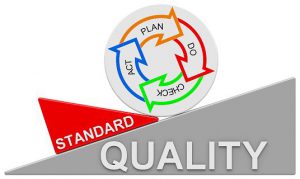Despite a growing awareness of the issue, the drug overdose epidemic continues to worsen in the United States.
The Centers for Disease Control and Prevention reported earlier this year that the number of deaths from drug overdose in 2016 rose by 20% over 2015. In the last three months of the year, the death rate from overdose hit 20.6 per 100,000 people, the highest rate ever.
Things have not improved in 2017. The number of drug overdose deaths in the 12 months ending in April 2017 was 17% higher than the number in the 12 months preceding April 2016, according to the CDC. With more than 65,000 deaths, it translates to almost 180 people dying every day in the United States from drug overdose.
In an effort to take on this crisis, physicians at the University of Chicago are adopting some of the tools of process improvement.
Data-Driven Approach
Physicians within the University of Chicago Medicine system decided to take a more proactive, holistic approach to the epidemic.
The plan includes data collection and analysis of drug prescribing patterns that put patients at a higher risk for overdose. It also involves using non-opioid pain management strategies and an improved system of disposing of unwanted medications.
Called the Pain Stewardship Program, the initiative calls for creating standardized treatment pathways based on data collected from previous cases. It not only helps doctors identify the best approach in different situations, but also supports risk assessment screenings that identify patients most likely to face potential overdose.
David Dickerson, a physician and chairman of the program, told the American Medical Association that “developing a systematic approach to identifying patients with known pain-care needs enables a non-reactionary approach and identifies the specific patients who need an individualized approach.”
Plan-Do-Study-Act
To accomplish this challenging goal, the physicians turned to a plan-do-study-act model. Essentially, this mirrors the Lean tool of PDCA (plan, do, check, act).
Dickerson said the model was essential to overcoming obstacles in creating a screening process for identifying those at higher risk for drug overdose. The system allowed for identifying obstacles and barriers “in real time during piloting,” he said.
That’s a key feature to PDCA, a valuable tool in Lean. It fosters a continuous cycle of process improvement that allows an organization to move quickly to address issues. The steps are as follows:
- Plan – Define the process to improve
- Do – Implement a plan and measure its results
- Check – Measure to see if desired results are being achieved
- Act – Make changes as needed to improve outcomes and start the cycle again
In the case of the University of Chicago Medicine, the system led to creation of a data-based screening process that is being implemented across all clinical operations in the healthcare system.
Process Improvement And Wait Times
The University of Chicago case is just one of many involving the use of process improvement in healthcare.
Although not as dire as the overdose epidemic, another issue that affects almost every patient are the lengthy wait times at some medical offices. A recent survey from American Society of Quality (ASQ) found that 82% of those in the healthcare profession said reducing wait times is a priority in their organization.
The ASQ survey also found that by utilizing process improvement tools and techniques, healthcare organizations reduced wait times 55%, from 35.2 minutes to 15.9 minutes. That makes for much more satisfied – or, at least, less frustrated – patients.
A Focus On Patients
In another process improvement example, an orthopedic surgeon has written about the success of Lean in medical operations across the country. Rajiv K. Sethi, an orthopaedic surgeon specializing in spinal surgery, wrote about the use of Lean in healthcare for the Journal of the American Academy of Orthopaedic Surgeons.
Lean focuses on cutting process waste with a focus on adding value to the customer (in this case, medical patients). Sethi wrote that “variability in healthcare creates waste and errors. Lean process improvement standardizes processes and algorithms to remove these barriers, decrease medical errors, enhance patient safety and enhance outcomes.”
According to his report, the Virginia Mason Medical Center in Seattle and other healthcare operations achieved impressive results by implementing Lean process improvement strategies. They included:
- Reducing the number of ventilator-associated pneumonia cases from 34 with five deaths to four cases with one death just two years later.
- Reduced complex spine surgery complication rates from 52% to 16%.
- ThedaCare, a hospital group based in Wisconsin, created $3.3 million in annual savings by using Lean methods to cut waste and inefficiencies
These all offer concrete examples of how process improvement methodologies are being used in the healthcare industry. As Sethi wrote for the journal, “Success is a continuous process improvement.”



